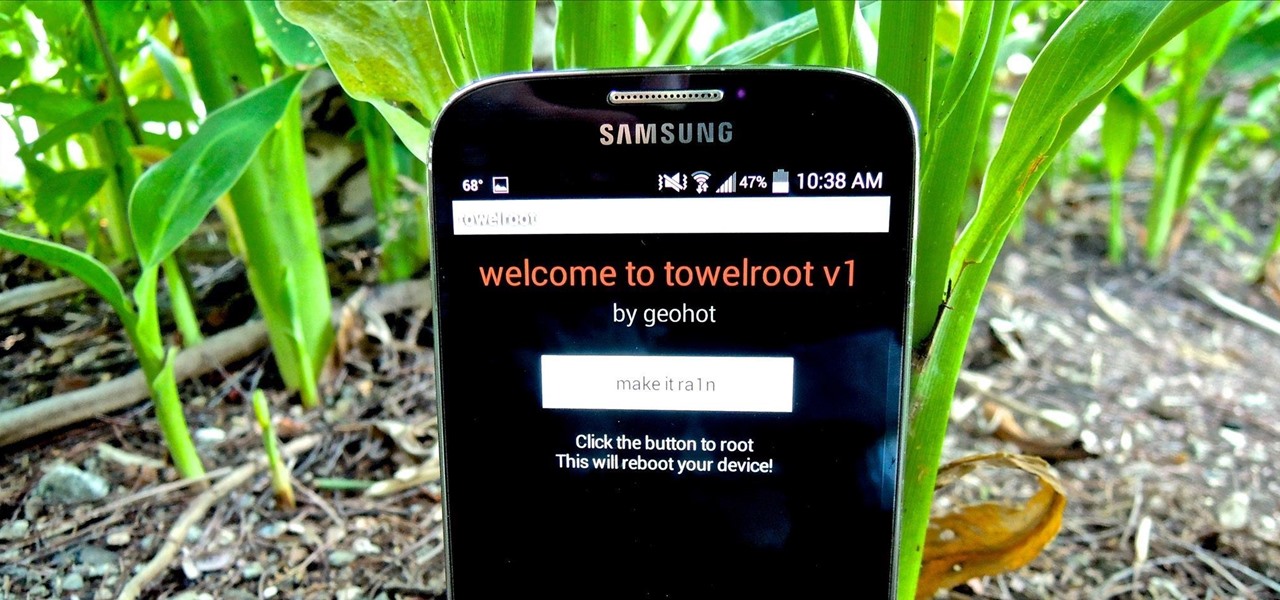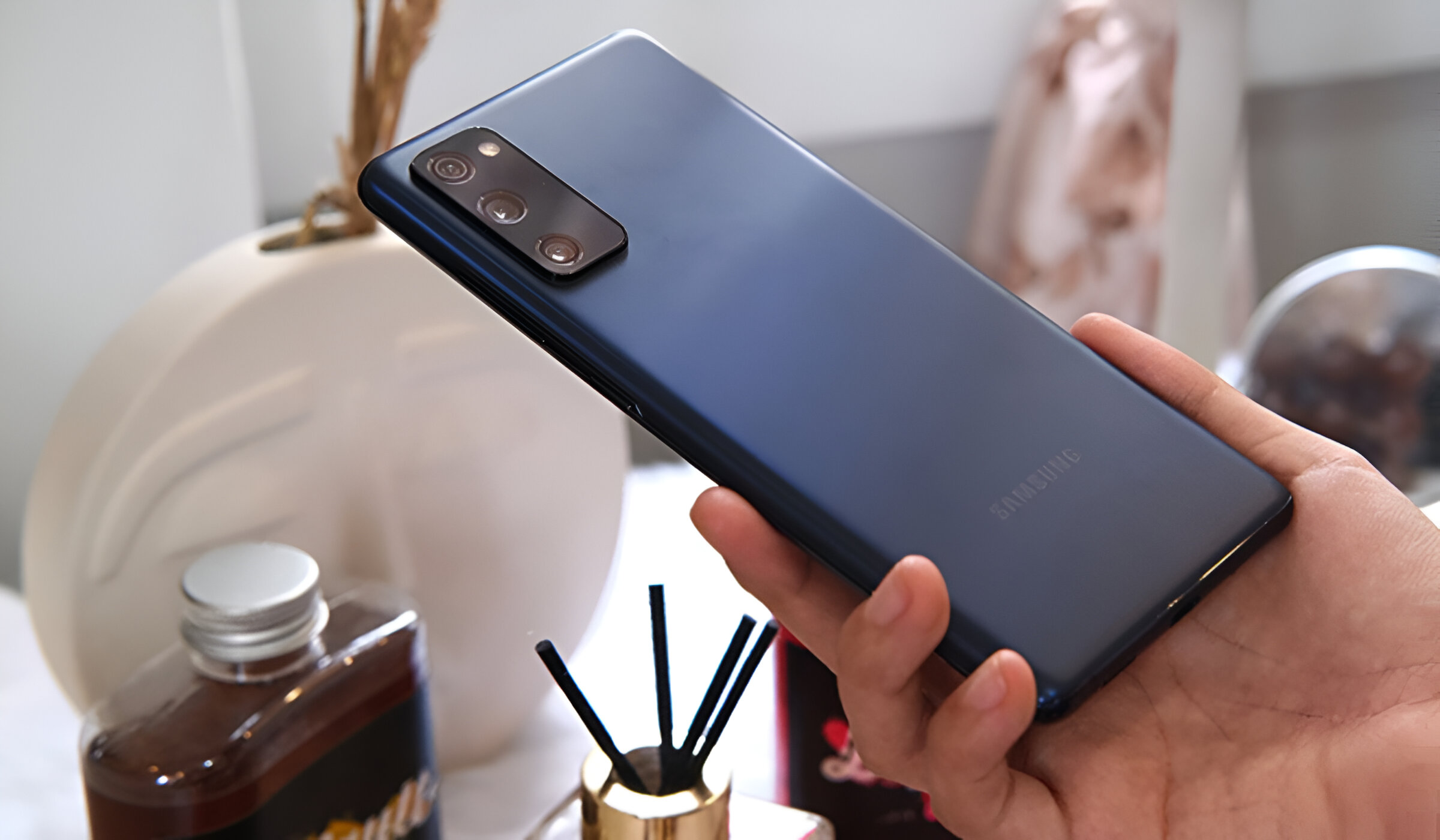Introduction
Welcome to the world of Android smartphones, where customization and control are at your fingertips. When it comes to getting the most out of your device, you may have heard the term “rooting” thrown around. But what exactly does it mean to root your Android smartphone?
Rooting an Android device refers to the process of gaining privileged control over the operating system. In simpler terms, it allows you to access the system files and settings that are normally locked or restricted. It’s like having the keys to the kingdom, granting you the ability to customize your device to your heart’s desire.
Rooting can be an exciting prospect for tech-savvy individuals who want to unlock the full potential of their Android smartphone. However, it is important to weigh the advantages and disadvantages before embarking on the rooting journey.
In this article, we will explore the ins and outs of rooting an Android smartphone, discussing the benefits, drawbacks, legality, different methods, and common tools used in the process. Whether you’re a seasoned Android enthusiast or simply curious about the world of rooting, read on to discover all you need to know.
What is Rooting?
Rooting an Android smartphone refers to the process of gaining administrative access to the device’s operating system. By default, Android devices come with limitations imposed by the manufacturers and carriers. These limitations, often referred to as “permissions,” are in place to ensure the stability, security, and user experience of the device.
However, rooting bypasses these restrictions, providing users with elevated privileges and control over their Android devices. When you root your phone, you essentially become the superuser or administrator, also known as “root,” hence the term “rooting.”
Rooting offers several advantages and opens up a world of possibilities for customization, optimization, and personalization. By gaining root access, you can modify system files, install custom ROMs (modified versions of Android), uninstall pre-installed bloatware, overclock or underclock the processor for performance adjustments, and even use exclusive root-only apps.
Furthermore, rooting allows you to take full control of your device’s hardware. You can manage system-level settings, such as CPU frequency, voltage, and governor, which can significantly impact performance and battery life. Additionally, you can access and modify system directories, enabling you to tweak advanced settings, improve system responsiveness, and even enhance the overall speed of your smartphone.
Rooting also grants you the ability to backup and restore your entire device, including system data and applications, through dedicated backup tools. This ensures that you can recover your device to a stable state or even switch between different ROMs without losing your data.
It is important to note that rooting is not without its risks and drawbacks. The process can void your device’s warranty, expose you to potential security risks if done incorrectly or with malicious intent, and even result in “bricking” your phone, rendering it unusable. Therefore, caution and research are paramount before attempting to root your Android device.
In the next sections, we will explore the advantages and disadvantages of rooting an Android smartphone, as well as its legality and different methods available. Stay tuned!
Advantages of Rooting
Rooting your Android smartphone opens up a plethora of advantages and benefits that can greatly enhance your overall user experience. Here are some of the key advantages:
- Customization: Rooting allows you to customize every aspect of your device, from the appearance of the user interface to the behavior of system apps. You can install custom themes, icons, and fonts, and even modify the layout of your device’s home screen to suit your preferences.
- Performance Optimization: By gaining root access, you can optimize your device’s performance. You can tweak CPU settings, such as clock speed and governor, to improve processing speed or conserve battery life. You can also use system optimization tools to clear cache, delete unnecessary files, and streamline your device’s performance.
- Ad-Blocking: Rooting enables you to block intrusive advertisements across your device, both within apps and while browsing the web. You can install ad-blocking apps that work at the system level, effectively eliminating annoying ads and enhancing your overall user experience.
- Remove Bloatware: Many Android devices come preloaded with unnecessary system apps, also known as bloatware. Rooting allows you to uninstall these unwanted apps, freeing up valuable storage space and improving system performance.
- Backup and Restore: Rooting gives you the ability to perform full device backups, including app data and system files. You can use dedicated backup tools to create complete backups of your device, allowing you to easily restore your data and settings in case of emergencies or when switching to a different ROM.
- Install Custom ROMs: One of the most popular advantages of rooting is the ability to install custom ROMs. These modified versions of Android offer unique features and customization options not found in the stock firmware. Custom ROMs can breathe new life into older devices, provide a more streamlined experience, and offer the flexibility to choose from a variety of interfaces and functionalities.
- Access to Root-Only Apps: Rooting allows you to install exclusive root-only apps that provide advanced features and functionalities. These apps can give you granular control over your device’s hardware, automate tasks, and unlock additional customization options.
Keep in mind that while the advantages of rooting can greatly enhance your Android experience, it is important to proceed with caution and make informed decisions. In the next section, we will explore the potential disadvantages of rooting to provide a well-rounded understanding of the process.
Disadvantages of Rooting
While rooting your Android smartphone can unlock a world of possibilities, it is important to consider the potential drawbacks before proceeding. Here are some of the key disadvantages of rooting:
- Voided Warranty: Rooting your device often voids its warranty. Manufacturers and carriers typically do not provide support or coverage for devices that have been rooted. If you encounter any hardware or software issues, you may be responsible for any repair costs or replacements.
- Security Risks: Rooting your device involves bypassing security protocols put in place by the manufacturer. This can leave your device more vulnerable to potential security threats and malware attacks. It is crucial to be cautious when granting root access to apps and only download from trusted sources.
- Bricking: Inexperienced or incorrect rooting procedures can result in “bricking” your device, rendering it inoperable and essentially as useful as a brick. This can happen if the system files are modified or altered incorrectly. It is essential to follow trustworthy and well-documented rooting instructions to minimize the risk of bricking your device.
- Incompatibility with OTA Updates: Once your device is rooted, you may encounter issues when installing official Over-The-Air (OTA) updates. These updates are designed for stock devices, and installing them on a rooted device can cause compatibility issues or even lead to loss of root access. However, custom ROMs often provide their own update mechanisms.
- Compromised Apps: Some apps require SafetyNet, a security mechanism that detects whether your device is rooted. If your device is rooted, these apps may not function properly or refuse to work altogether. This can include banking apps, streaming services, and other apps that rely on stringent security measures.
- Risk of Data Loss: Rooting involves making changes to your device’s system files, which can potentially lead to data loss if not done correctly. While backing up your data is recommended before rooting, there is always a chance of accidental data loss during the rooting process.
- Technical Complexity: Rooting your device requires technical knowledge and understanding of the rooting process. It involves using specialized tools, executing commands, and potentially troubleshooting issues. For those who are less tech-savvy, rooting can be a challenging and intimidating process.
It is important to weigh these disadvantages against the advantages and assess whether rooting is the right choice for you. If you decide to proceed, research thoroughly and follow reputable guides to minimize the potential risks. In the next section, we will delve into the legality of rooting and address common misconceptions.
Is Rooting Legal?
The legality of rooting an Android smartphone varies depending on your jurisdiction. In many countries, including the United States, rooting is legal as long as it does not involve circumventing copyright protection measures or infringing on intellectual property rights. However, it is essential to understand the legal implications specific to your country or region.
The Digital Millennium Copyright Act (DMCA) in the United States explicitly exempts rooting from being considered a violation of copyright law. The exemption allows users to root their devices, modify software, and install custom ROMs without legal consequences. However, it is important to note that this exemption does not apply to any activities that involve piracy, such as downloading copyrighted material.
It is worth mentioning that manufacturers and carriers may still consider rooting as a violation of their terms of service, which could potentially void your device’s warranty. However, this is a contractual matter between you and the manufacturer, rather than a legal issue.
It is always recommended to research and familiarize yourself with the specific laws and regulations concerning rooting in your country. Consult with legal professionals or credible sources to ensure you are in compliance with local regulations.
It is also important to note that while rooting itself may be legal, the activities that users engage in after rooting can sometimes fall into a legal gray area. For example, using rooting to bypass digital rights management (DRM) protections or engage in illicit activities may be considered illegal. Therefore, it is crucial to use your rooted device responsibly and respect the boundaries of legality.
Remember, the legal landscape surrounding rooting can change, and laws may differ from country to country. Stay informed about any legal updates or changes that may affect the practice of rooting. In the next section, we will explore different methods of rooting an Android smartphone, catering to the diverse needs and preferences of users.
Different Methods of Rooting
When it comes to rooting an Android smartphone, there are various methods available to cater to different devices and user preferences. Here are some common methods used for rooting:
- One-Click Rooting Tools: One-click rooting tools, also known as automated rooting tools, are popular among users who prefer a simplified and user-friendly approach. These tools require minimal technical knowledge and often involve connecting your device to a computer and running the rooting software. Examples of popular one-click rooting tools include KingoRoot, iRoot, and Magisk.
- Custom Recovery: Custom recovery is another method used for rooting Android devices. Custom recovery software, such as TWRP (Team Win Recovery Project), allows users to perform advanced operations, including installing custom ROMs, creating full backups, and flashing root packages. This method typically involves unlocking the device’s bootloader and installing a custom recovery image using a computer.
- Rooting via Custom ROMs: Many custom ROMs come pre-rooted, negating the need for a separate rooting process. By installing a custom ROM, you can simultaneously gain root access and benefit from the additional features and customization options provided by the ROM. This method often requires unlocking the bootloader, installing a custom recovery, and flashing the desired custom ROM.
- Manufacturer-Specific Methods: Some device manufacturers provide their own methods for rooting their devices. For example, Samsung devices have a program called Odin, which is used to flash firmware and root packages onto the device. These manufacturer-specific methods may vary, so it is important to research and follow the instructions provided by the manufacturer.
- Developer Community Methods: The Android developer community is vast and active, often devising unique methods and tools for rooting specific devices. These methods may involve manually patching system files, executing commands through a terminal app, or using specialized scripts. While effective, these methods usually require a higher level of technical knowledge and caution.
It is important to note that each rooting method comes with its own set of risks and requirements. Factors such as your device model, operating system version, and the availability of specific rooting tools will influence the method you choose. Always research thoroughly and follow reputable guides specific to your device to ensure a successful and safe rooting process.
In the next section, we will guide you through the general steps involved in rooting an Android smartphone, providing a basic understanding of the process.
How to Root an Android Smartphone?
Rooting an Android smartphone can be an involved process, but with the right knowledge and careful execution, it can be successfully achieved. Here is a general outline of the steps involved in rooting an Android device:
- Back up your data: Before you begin the rooting process, it is crucial to back up all your important data, including contacts, photos, videos, and any other files that you don’t want to lose during the process. This will ensure that even if something goes wrong, your data will remain safe.
- Enable USB Debugging: On your Android device, go to the Developer Options in the Settings menu. If the Developer Options are not visible, go to About Phone and tap on the Build Number several times until a message indicating that you are now a developer appears. Then, enable USB Debugging, which allows your device to communicate with your computer during the rooting process.
- Unlock the bootloader (if necessary): Some devices come with locked bootloaders, which need to be unlocked before rooting. Unlocking the bootloader wipes all data on the device, so ensure that you have backed up your data before proceeding. The method for unlocking varies between device manufacturers, so consult reliable sources or the manufacturer’s website for specific instructions.
- Find and select a rooting method: Depending on your device, Android version, and personal preference, choose a suitable rooting method. This can include using one-click rooting tools, custom recovery software, installing a custom ROM, or following device-specific rooting instructions. Research and ensure that the chosen method is compatible with your device.
- Follow the rooting instructions: Once you have selected a rooting method, carefully follow the provided instructions. Pay attention to each step and execute them accurately. Deviating from the instructions or rushing through the process can potentially lead to problems, such as bricking your device.
- Verify successful root access: After completing the rooting process, verify whether your device has gained root access. You can do this by installing a root checker app from the Google Play Store, which will confirm whether your device is properly rooted.
- Install a root management app (optional): To effectively manage root access and permissions on your device, you may consider installing a root management app such as SuperSU, Magisk Manager, or Kingo SuperUser. These apps enable you to control which apps have root access and ensure that you maintain control over your device’s security.
Remember to always proceed with caution, following reputable guides specific to your device. Keep in mind that rooting can void your device’s warranty and carry risks, so it is important to research thoroughly, back up your data, and understand the potential consequences before proceeding.
In the next section, we will explore some common rooting apps and tools that can assist you in the rooting process and enhance your rooted Android experience.
Common Rooting Apps and Tools
When it comes to rooting an Android smartphone, there are several popular apps and tools that can simplify the process and enhance your rooted experience. Here are some of the most common ones:
- KingoRoot: KingoRoot is a one-click rooting tool that supports a wide range of Android devices. It provides a simple and user-friendly interface, allowing users to root their devices with just a few clicks. KingoRoot is known for its high success rate and compatibility with many popular Android smartphones.
- Magisk: Magisk is a powerful root management tool that offers a systemless root solution. With Magisk, you can gain root access while still passing SafetyNet and maintaining the ability to use banking apps, play games, and access other root-detecting services. It also offers modules that can be installed to add extra functionalities to your rooted device.
- SuperSU: SuperSU is one of the most widely used root management apps. It allows you to manage and control root access permissions for individual apps on your device. SuperSU provides a user-friendly interface and includes features like logging, notifications, and deep process detection.
- TWRP (Team Win Recovery Project): TWRP is a popular custom recovery tool that allows you to flash custom ROMs, create backups, and perform various system operations on your rooted Android device. It provides a touch-based interface, making it easy to navigate and execute advanced tasks with ease.
- Odin: Odin is a firmware flashing tool specifically designed for Samsung devices. It allows you to flash firmware, custom ROMs, and other system modifications onto your Samsung smartphone. Odin is often used in conjunction with custom recoveries like TWRP to root Samsung devices.
- Root Explorer: Root Explorer is a file management app specifically designed for rooted Android devices. It provides access to the system files and directories, allowing you to navigate and modify files that are not accessible in a non-rooted device. Root Explorer offers features like file editing, batch operations, and the ability to view and modify file permissions.
These apps and tools are just a few examples of what is available for rooting and managing rooted Android devices. Before using any app or tool, ensure that it is compatible with your device model and Android version. Additionally, always download from trusted sources to avoid malicious software or compromised versions of these tools.
Keep in mind that rooting apps and tools should be used responsibly to maintain the security and stability of your device. Always proceed with caution and make sure to research, understand, and backup your device before using any rooting app or tool.
In the next section, we will address some commonly asked questions about rooting, providing further clarification on the topic.
Rooting FAQs
Rooting an Android smartphone can be a complex topic, so it’s natural to have questions. Here are some frequently asked questions about rooting, along with their answers:
1. Is rooting safe?
Rooting carries certain risks, such as voiding your device’s warranty, risking security vulnerabilities, or potentially bricking your device if not done correctly. However, if done responsibly and following reputable guides, rooting can be a safe process.
2. Can I unroot my device?
Yes, it is possible to unroot your device. Many rooting methods allow you to unroot through the same tools or procedures used for rooting. Additionally, you can often restore your device to its factory state or install an official firmware to remove root access.
3. Will rooting improve the performance of my device?
Rooting provides the opportunity to optimize your device’s performance by customizing system settings, eliminating bloatware, and installing system-level tweaks. However, the extent of performance improvement varies depending on factors such as device specifications and the modifications made.
4. Will rooting void my device’s warranty?
Rooting often voids the manufacturer’s warranty, as it involves making system-level changes not authorized by them. However, in some cases, you may be able to restore your device to an unrooted state and retain the warranty.
5. Can I still receive official system updates after rooting?
Rooting can affect the ability to install official Over-The-Air (OTA) updates. However, with methods like Magisk, you can maintain root access while still applying OTA updates by passing SafetyNet checks. Custom ROMs also offer their own update mechanisms.
6. Do I need root access to install custom ROMs?
No, you do not always need root access to install custom ROMs. Many custom ROMs come pre-rooted, allowing you to gain root access automatically during installation. However, some ROMs may require separate root installation or additional steps.
7. Should I root my Android device?
Whether to root your Android device depends on your specific needs and preferences. Rooting provides greater control, customization, and access to advanced features, but it also comes with certain risks. Consider the advantages and disadvantages, and research thoroughly before making a decision.
8. Is it illegal to root an Android smartphone?
The legality of rooting varies by country. In many jurisdictions, rooting is legal as long as it does not involve copyright infringement or circumvention of digital rights management. However, it is important to understand the specific laws in your region and to proceed responsibly.
9. Is it possible to brick my device while rooting?
While it is possible to brick your device during the rooting process, following reputable guides and exercising caution can minimize this risk. Ensure that you have a full backup of your device and carefully follow the instructions to reduce the chances of damaging your device.
10. Can I still use banking apps and other protected apps after rooting?
Rooting may affect the ability to use certain apps that require SafetyNet or have security measures to detect root access. However, solutions like Magisk can often hide root access, allowing you to use banking apps and other protected apps without any issues.
Remember that rooting is an advanced procedure that should be undertaken with adequate knowledge and understanding. If you are unsure or unfamiliar with the process, it is recommended to seek assistance from experienced individuals or forums.
Now that we have covered these common questions, let’s summarize everything in the concluding section.
Conclusion
Rooting an Android smartphone can be a powerful way to unlock the full potential of your device, offering customization, performance optimization, and access to advanced features. By gaining root access, you can take control of your device’s operating system and tailor it to suit your preferences.
Throughout this article, we have explored the concept of rooting, the advantages and disadvantages it brings, its legality, different rooting methods, and common rooting apps and tools. We have discussed the need for caution, research, and backup before undertaking the rooting process to minimize risks and ensure a successful outcome.
While rooting offers numerous benefits, it is important to note that it is not without risks, such as voiding warranties or potentially compromising device security if done improperly. Therefore, it is crucial to make informed decisions, follow reputable guides, and stay updated on the legal landscape surrounding rooting in your jurisdiction.
Ultimately, the decision to root your Android device lies with you and your specific needs and preferences. If you are seeking greater control, customization, and the ability to maximize the performance of your device, rooting may be worth exploring. However, if you are content with your device’s stock functionality and concerned about the potential risks, it may be best to refrain from rooting.
Remember, rooting should always be accompanied by responsible usage. It is important to understand the implications and be mindful of the security risks associated with root access. Regularly updating your device’s security software, being cautious with root permissions, and only downloading apps from trusted sources are essential practices to maintain a safe and secure rooted Android experience.
Whichever path you choose, we hope this article has provided you with valuable insights into the world of rooting an Android smartphone. By arming yourself with knowledge and approaching rooting with caution, you can make informed decisions and unlock a new world of possibilities for your Android device.

























